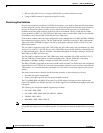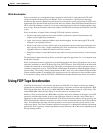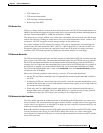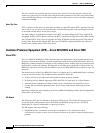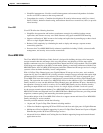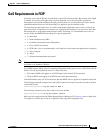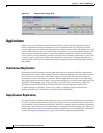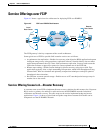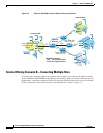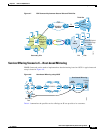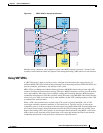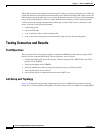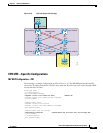
4-14
Data Center High Availability Clusters Design Guide
OL-12518-01
Chapter 4 FCIP over IP/MPLS Core
Applications
Figure 4-4 Using the GUI to Apply QoS
Applications
Disaster recovery and business continuance plans drive the need for solutions that protect critical
business information and provide continuous access to important data in case of disaster. Disaster
recovery applications are intended to replicate data to a remote backup location. The backup site can be
located in the same metro area, such as New York and New Jersey, or at transcontinental distances. The
more stringent requirements of business continuance emphasize real-time restoration; when disaster
occurs, failover is nearly immediate, providing for faster recovery. Business continuance is put in place
to protect business applications at times when downtime is not an option. Common applications for
replicating and protecting critical information include synchronous and asynchronous replication and
tape backup.
Synchronous Replication
Synchronous replication protects data and applications that have stringent availability requirements.
Some applications, such as online trading, must be designed and implemented so that no data is lost in
case of a disaster. To achieve this, transactions must be written on both the main and backup sites
synchronously to keep the databases consistent. When an application writes data to disk, that data is
being replicated to the remote site before a write acknowledgement is sent back to the application. The
write I/O is acknowledged on the server only when a block of data has been written on both sites.
Therefore, the latency introduced in the network directly affects the application performance.
To limit the impact of replication, storage array vendors are imposing distance limitations for
synchronous replication. The distance is typically around 100 kilometers.
Asynchronous Replication
If a limited amount of business information can be lost in case of disaster, asynchronous replication can
be used. Asynchronous replication provides very good protection, but some transactions can be lost in
case of disaster. With asynchronous replication, write I/O is completed after being written on the main
storage array. The server does not wait until the I/O is completed on the other storage array. There is no
distance limitation and typical asynchronous replication applications can span thousands of kilometers
or more. See Application Requirements, page 4-29 for more on application requirements.



